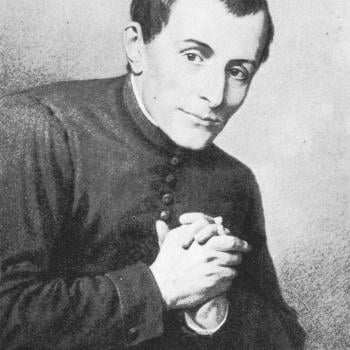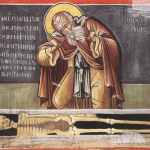 The history of Eastern Orthodoxy in the United States is fascinating. In my own study of it I’ve been amazed at how one individual can so dramatically change the course and direction of the Church. There are a handful of individuals who had a vision for the Gospel and their community and were able to transform the life of the communities they were a part of.
The history of Eastern Orthodoxy in the United States is fascinating. In my own study of it I’ve been amazed at how one individual can so dramatically change the course and direction of the Church. There are a handful of individuals who had a vision for the Gospel and their community and were able to transform the life of the communities they were a part of.
For Orthodox Christians in the United States, particularly those connected to the OCA today, the work of Alexander Schmemann has made a tremendous impact.
I personally noticed this as I began spending time with Orthodox Christians regularly about 10 years ago. It seemed Fr. Schmemann was referenced all the time. I didn’t really understand the scope and the controversy of his influence until I read Paul Meyendorff’s contribution to We Give Our Thanks to Thee.
We turn our attention today to the second chapter in Porter Taylor’s volume in honor of Fr. Schmemann today; a chapter entitled “Alexander Schmemann’s Liturgical Legacy in America;” an essay that is now 10 years old, but reprinted in this volume graciously. Dr. Meyendorff is uniquely positioned to speak of his influence. He held the chair named after Schmemann at St. Vladimir’s and has been writing on Schmemann for over 30 years.
In this contribution, Meyendorff lays out a very helpful picture of how Schmemann was able to impact a new generation of pastors with a deep respect for the power and role of the liturgical life of the Church in the 20th century.
First, he mentions the establishment of liturgical theology as a legitimate academic discipline. This is the legacy that is most evident to liturgical theologians. In many ways, Schmemann pioneered a whole school of thought and an approach to the liturgy that has remained highly influential on many of the leading liturgical minds of today. I would be tempting to spend most of the essay speaking of this contribution but Dr. Meyendorff does not.
Meyendorff focuses most of his article on the pastoral impact of Fr. Schmemann. The first of these impacts is Baptism. It’s incredible to see how practices around baptism have so dramatically changed within a generation because of the work of Fr. Alexander. When he began his ministry in the United States baptisms were private affairs marking the birth of a child, and done in private residences. Fr. Schmemann transformed this not through a heavy-handed approach in the parish but by casting a bigger vision of sacramentality in the life of the Church and to the world in the lives of the seminarians he encountered.
Meyendorff then talks about the Eucharist itself. Schmemann similarly cast a vision for the Eucharist that was deep, personal, transformative and made it a core part of the Christian life. As he communicated through beauty, he was able to change practice. The faithful, at the beginning of his ministry, rarely received. The anaphora was a secret prayer, and an unhealthy piety around one’s worthiness had grown up around the reception of the sacrament. Schmemann worked hard to change the imagination of the faithful and was able to make regular reception normative in many parishes.
Just as Schmemann inspired the faithful to make regular reception a part of their spiritual lives, he also helped to restore confession of sins into the normal life of the Church. He realized that many of the faithful had never experienced this sacrament in the United States, and the few that did experience it in contexts that were rushed and distracted. The US created a context in which the monastic elders that had been deeply tied to the practice were simply not to be found in most communities. For those who were required to confess once a year (Orthodox in the Slavic tradition) the experience was generally all done before the Holy Thursday Liturgy and did not allow for much instruction from the priests.
Fr. Schmemann’s recommendations were considered radical by some. He promoted the practice of a general confession where more emphasis could be given to the priest’s exhortation and promote a higher call to holiness. It also facilitated confession more regularly which contributed to a higher level of participation in the sacraments.
I really appreciated this chapter because it helped contextualize Schmemann outside of his theory and put into practical terms how his sacramental vision for the world was actually implemented by Fr. Schmemann and the many Priests he influenced in his years as their teacher. It showed me Schmemann as a pastor, which is a truly wonderful perspective to have on him.
Please stay tuned as we continue our tour of We give our thanks to thee here.
If you’re interested in the intro to this series check it out here.












